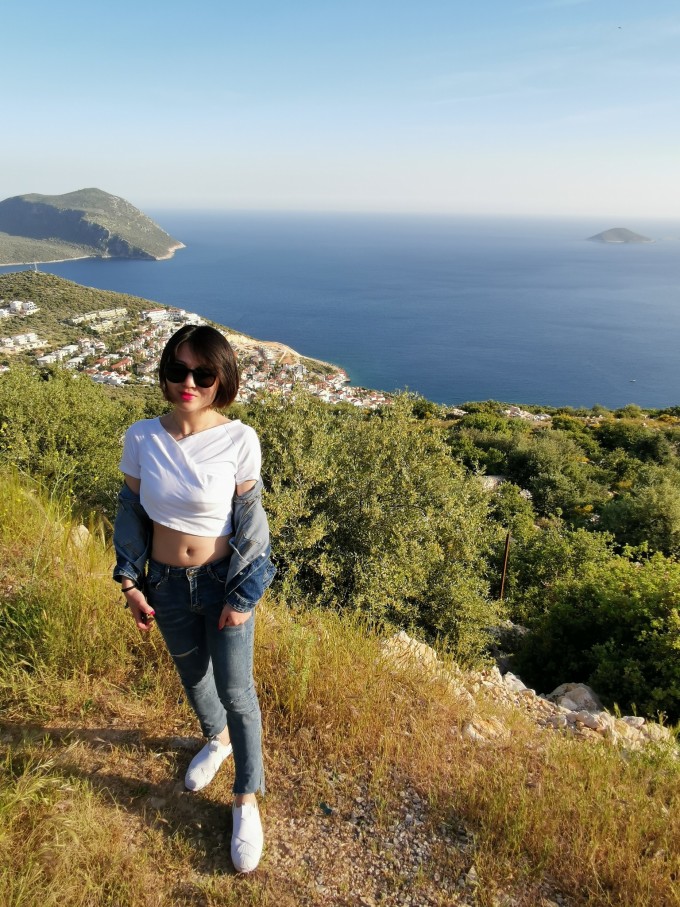老妖怪和兔子狗土耳其自駕之旅,經多哈探尋你所不知道的棉花堡以弗所D400卡什Patara




DAY6費特希耶-卡什 自駕D400今天本來是自駕的重頭戲D400公路,但是在車裡蜷縮了一晚上之後感覺狀態實在太不好了。迷迷糊糊醒來只覺得全身酸痛,還餓得很。轉了一圈也沒看到吃早餐的地方。老妖怪提出那就先去景點轉轉,那好吧,總不能浪費時間。順著導航我們打算去一個山頂的古墓,原本打算開車上去,可是山路蜿蜒陡峭還特別狹窄,有輛車停在路邊結果把我卡住了,過不去退不得。花了二十多分鐘好不容易才通過,嚇得我們乖乖把車停在山腳的停車場走上去。
阿敏塔斯古墓位於 費特希耶 至高點的懸崖峭壁中,由岩石鑿刻而成,這座墓穴建於公元前350年,站在墓室門口的臺階上可以俯瞰 費特希耶 小鎮和海灣。墓室損毀很厲害,門已經被破壞了半扇,裡面陰森森的,我也不敢進去。來這裡的人很少正好又是清晨,海風吹過,會讓人有種在古墓探險的感覺。想想要是黃昏來看,夕陽餘暉灑在墓室門口也是另一種韻味。
嘲笑完妖怪,我們回車上繼續趕路。導航顯示路上有個海邊的遺址公園,順著導航開到了這個叫做Patara的公園。公園非常大,在海邊有超美的沙灘和古 羅馬 的城鎮遺址,而且門票又很便宜,兩人一車才15 裡拉 。 地中海 的陽光真是名不虛傳,我被曬得頭暈,古 羅馬 遺址的標配當然就有圓形劇場和 石柱 大道啦~不得不說 土耳其 的古 羅馬 遺址也太多了,尤其是 土耳其 西部。這個公園非常小眾,馬蜂窩上的游記都沒有提過,網上也只找到一篇英文介紹。不過親身經歷還是非常值得推薦的~
Patara (Patar in Hittite language, Pttara in Lycian language) is located near the Gelemiş village in Antalya province on the southwestern coast of Turkey. Patara, an ancient Lycian harbor city, can be dated back to the 8th century B.C. It is said that the city was founded by Patarus, a son of Apollo. In ancient times, the Xanthus River flowed through Patara, where was the only entrance to the Xanthos valley. Thus Patara became a very important harbor city and flourished because of trade throughout history.
Patara(Patar來源於赫梯語言,Pttara來源於 利西亞 語言),位於 土耳其 西 南海 岸的 安塔利亞 省,是一個古代的海濱城市。它的歷史可以追溯到公元前八世紀,據說是太陽神阿波羅之子Patarus建立的。在古時候,Patara是個非常重要的港口城市。
In 333 B.C., the city of Patara was captured by Alexander the Great. During the Wars of Alexander’s successors (322-275 BC), the city was occupied by Antigonus and then by Demetrius. Finally it fell to the Ptolemies of Egypt. Ptolemy Philadelphus of Egypt named the city Arsinoe (Arsinoë) after Arsinoe II of Egypt, who was his wife and sister. However the name of the city was continued to be Patara. In 196 B.C., Antiochus III took Patara. The city with the rest of Lycia was granted its freedom as a Roman ally in 167 B.C. In 88 B.C., Mithridates IV, king of Pontus, besieged Patara, and the city was captured by Brutus and Cassius during their campaign against Mark Antony and Augustus. In 43 A.D., Patara was annexed to the province of Pamphylia by the Roman Empire. The city was one of the six leading cities of ancient Lycia, along with Xanthos, Olympos, Pinara, Tlos and Myra. The council meetings were held in the parliament building in Patara. The city became the capital of Lycia and Pamphilia provinces. In Roman times, Patara was the major naval and trading port of Lycia. Grains were stored and shipped from the Port of Patara. In the Byzantine period, Patara became an important city for Christians. It is known that Patara was the birthplace of St. Nicholas (ca. 280-343), who lived in the town of Myra (Demre). (For further information about St. Nicolas, please visit the site of Myra.) During the wars between the Turks and the Byzantines, the city declined and was mostly abandoned. After the 16th century, the port of Patara began to be filled with blowing sand. Ships were not able to approach the dock and thus Patara lost its importance as a port.
公元前333年,Patara被 亞歷山大 大帝占領。在公元前322年至275年期間,Patara先後被Antigonus 和Demetrius占領。最後又被 埃及 托勒密王朝占領。
The excavations of Patara were begun by Prof. Dr. Fahri Işık of Akdeniz University in 1988. At the end of 2007, all the sand had been taken out from the theatre and some other buildings, and the columns on the main street had been partially re-erected. Since 2009 the excavation projects of Patara have been carried out by the team of Turkish archaeologists under the supervision of Prof. Dr. Havva İşkan Işık of Akdeniz University. At the archaeological site, numerous ruins of the city of Patara can be seen including a theatre, built in the reign of Antoninus Pius, excavated in the northern side of a small hill; a temple on the side of the same hill; and a deep circular pit, of singular appearance, which may have been the seat of the oracle. Besides them, the town walls and several towers as well as a castle that commanded the harbor, have been preserved. On the outside of the walls, there are many stone sarcophagi, most of them bearing inscriptions. The harbor still can be seen, though it is in a wetland. A Roman triumphal arch of Mettius Modestus, built after the first century, is located 2 km away from Gelemiş. In 1991, the parliament building, constructed in the first century A.D., was discovered during the excavations carried out by the Archaeology Department of Akdeniz University. It was served as the parliament building of the Lycian League for 500 years. In 2010-2012, with the support of Turkish Grand National Assembly, the building was restored by the Archaeology Department of Akdeniz University along with a scientific restoration committee. In 1993, Stadiasmus Patarensis, a Roman milestone, was found in Patara. This monumental pillar is currently exhibited in the garden of the Antalya Museum. In 2016, a horse relief in the Achaemenid style, dated to the 5th century B.C., was discovered during the excavations by the archaeological team of Akdeniz University.內容大致就是Patara的前世今生,等我有空再來翻譯
海灘空無一人,完全被我們包場了,盡情享受 愛琴海 的陽光啊!露臍裝一放鬆肚子上的肉肉就會超級明顯,每次拍照前都要深吸一口氣,並暗暗下決心要減肥,當然換了件衣服就忘了。




















